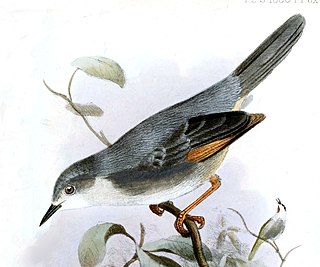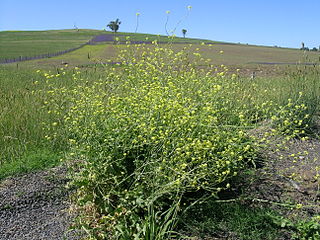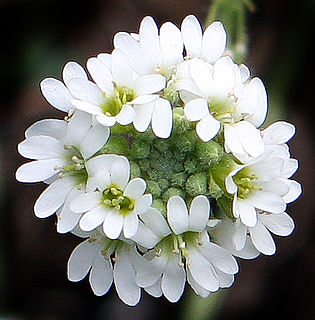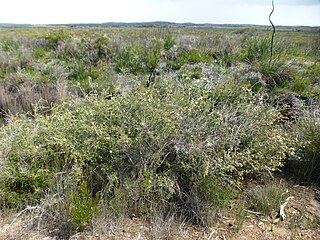
Calendula, is a genus of about 15–20 species of annual and perennial herbaceous plants in the daisy family Asteraceae that are often known as marigolds. They are native to southwestern Asia, western Europe, Macaronesia, and the Mediterranean. Other plants are also known as marigolds, such as corn marigold, desert marigold, marsh marigold, and plants of the genus Tagetes. The genus name Calendula is a modern Latin diminutive of calendae, meaning "little calendar", "little clock" or possibly "little weather-glass". The common name "marigold" refers to the Virgin Mary. The most commonly cultivated and used member of the genus is the pot marigold. Popular herbal and cosmetic products named 'calendula' invariably derive from C. officinalis.

Alnus incana, the grey alder or speckled alder, is a species of alder with a wide range across the cooler parts of the Northern Hemisphere.

The wandering tattler, is a medium-sized wading bird. It is similar in appearance to the closely related gray-tailed tattler, T. brevipes. The tattlers are unique among the species of Tringa for having unpatterned, greyish wings and backs, and a scaly breast pattern extending more or less onto the belly in breeding plumage, in which both also have a rather prominent supercilium.
The Hoary Banksia is a species of small shrub in the plant genus Banksia. It occurs on sandplain heathland between Badgingarra and Eneabba in Western Australia, with outlying populations as far south as Perth.
Sphaeralcea incana, with the common names gray globemallow and soft globemallow, is a desert plant in the mallow family (Malvaceae).

The red-winged grey warbler is a species of bird in the Cisticolidae family. It is monotypic within the genus Drymocichla. It is found in Cameroon, Central African Republic, Democratic Republic of the Congo, South Sudan, and Uganda. Its natural habitats are moist savanna and subtropical or tropical moist shrubland.

The Socotra warbler is a species of bird in the Cisticolidae family. It is monotypic within the genus Incana. It is endemic to Socotra. Its natural habitats are subtropical or tropical dry shrubland and subtropical or tropical high-altitude shrubland. It is threatened by habitat loss.

Hirschfeldia incana is a species of flowering plant in the mustard family known by many common names, including shortpod mustard, buchanweed, hoary mustard and Mediterranean mustard. It is the only species in the monotypic genus Hirschfeldia, which is closely related to Brassica. The species is native to the Mediterranean Basin but it can be found in many parts of the world as an introduced species and often a very abundant noxious weed. This mustard is very similar in appearance to black mustard, but is generally shorter. It forms a wide basal rosette of lobed leaves which lie flat on the ground, and it keeps its leaves while flowering. Its stem and foliage have soft white hairs. Unlike black mustard, H. incana is a perennial plant.

Berteroa incana is a species of flowering plant in the mustard family, Brassicaceae. Its common names include hoary alyssum, false hoary madwort, hoary berteroa, and hoary alison. It is native to Eurasia and it has been introduced to western Europe and North America. It is listed as an invasive noxious weed in some areas of United States.

Brickellia incana is a North American species of flowering plant in the daisy family known by the common name woolly brickellbush. It is native to the Mojave Desert and Sonoran Desert in the southwestern United States, in California, Nevada, and Arizona.
Hosackia incana, synonym Lotus incanus, is a species of legume native to California. It is known by the common name woolly bird's-foot trefoil. It is endemic to the Sierra Nevada of California, where it grows in forests and other mountain habitat.

Buddleja incana is a species of shrub or tree in the family Scrophulariaceae. It is native to the Andes.
Senra incana is a flowering plant species in the genus Senra. The plant produces the phenolic compounds coniferaldehyde, scopoletin, sinapaldehyde and syringaldehyde

Quercus incana is a species of oak known by the common names bluejack oak, upland willow oak, sandjack oak, and cinnamon oak. It is native to the Atlantic and Gulf coastal plains of the United States, from Virginia around Florida to Texas and inland to Oklahoma and Arkansas.
Quishuar is an archaeological site in Peru. It is situated in the Ancash Region, Yungay Province, in the south of the Yanama District.

Sybra is a genus of beetles in the family Cerambycidae, containing the following species:

Sybra umbratica is a species of beetle in the family Cerambycidae. It was described by Pascoe in 1865.

Sybra ordinata is a species of beetle in the family Cerambycidae. It was described by Bates in 1873.

Melaleuca incana, commonly known as grey honey-myrtle, is a plant in the myrtle family, Myrtaceae and is endemic to the south-west of Western Australia and is naturalised in the south of Victoria in Australia. It is commonly grown as a garden plant and produces large numbers of white or creamy yellow flowers, sometimes highly scented, in spring.
















